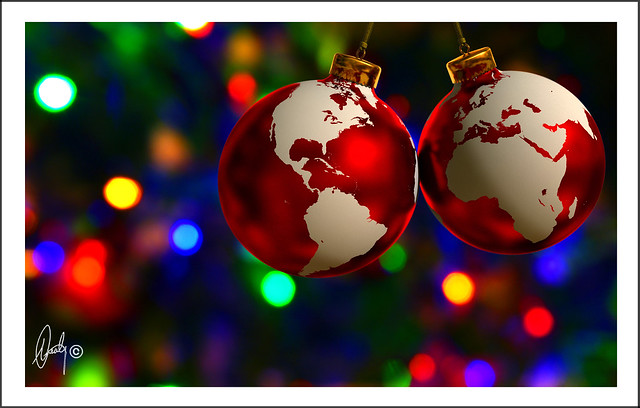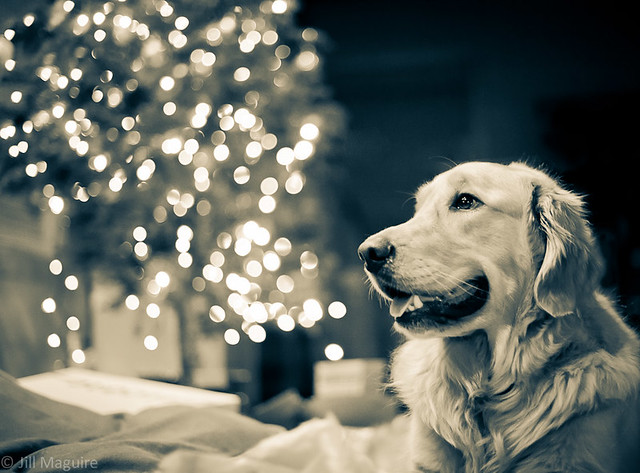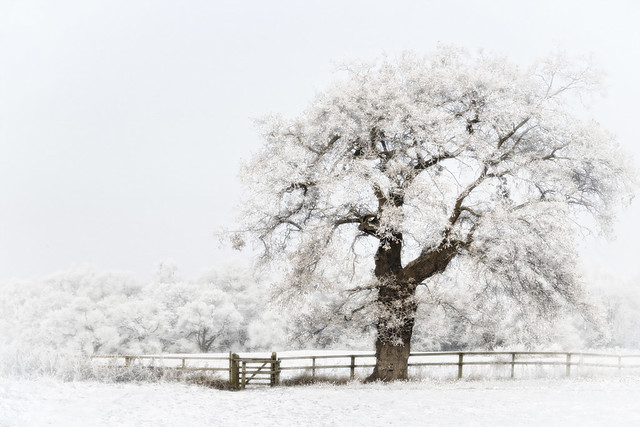Well guys, this is one of the secrets I really hope WikiLeaks will reveal one day! :)
Flickr created a real mystery around their ranking system which produced a massive hype within the users. Myself, I spent at least 3 days trying to crack the Da Flickri Code. Not because I wanted to get explored every day (well, not only!) but more because I just wanted to get how it works, at last. Using all my upper-intermediate knowledge of Excel (where I transferred the statistics of my 250 photos uploaded on Flickr so far) I managed to work out a few formulas based on logarithms that were quite close but still didn't correspond correctly with the ranking of my photos sorted by Flickr Interestingness. So I gave up and decided that the only way to get the secret algorithm is to get hired by Flickr Company (maybe). LOL
Anyway working with the huge amount of the statistics of my photos I noticed a number of dependences between activity around the pic and its ranking. And here they are.
1. FAVORITES.
Favorites are the main element that affects on your photo ranking. The more favorites you have the higher the photo will go. Don't even bother to check your photo in Explore Top 500 if it was marked as favorite less than 5 times on the upload day.
2. COMMENTS.
Same as with favorites (the more you get the better you do). But with the same amount of faves and comments, the latter would equal about twice less. Besides, comments made by you are not counted at all, so don't spend time postwhoring in your own thread - it will not help you at all and more likely will alienate other users.
3. VIEWS.
Some users think it is the key element of getting explored. Not at all. Actually views are counted when the system needs to rank the photos with all other equal activity elements (for example, two photos have the same number of comments and faves). But overall, by my calculations more than 150 views may equal just 1 fave. One of my photos has 350 views with 0 comments and 0 faves and Flickr charted it lower than a photo with only 39 view but 1 comment and 1 fave. Although there is one dependence between views and ranking that I noticed: the more views you have from referral sites than from Flickr pages the higher your photo would go. This is how Flickr tries to attract new users I guess.
4. GROUPS.
There is a lot of discussions about how adding photos to Flickr groups affect on Interestingness. I made few experiments and I can officially announce that adding photos to groups do NOT affect on the ranking of your photo whether you add it to 1 group or 60. The only thing is that some groups are black listed by Flickr staff when compiling Explore Top 500. Thus, if you added your photo to a group with the striking slogan "Post #, Comment on #, Fave #" or with simple name "P1/C1,A1,F1" (even if your reason was to add a picture of a flower to a flower group as it also says in its title), your photo will not get through to the Explore. Forced commenting or favoriting is considered as cheating.
5. TAGS.
This is a very important element! By my observations every tag that you add gives you extra points. But not more than 10. Every next tag after the total number of 10 would not help you anymore.
6. GEOTAGGING.
After geotagging your photo Flickr's algorythm always propels it higher up the Interestingness chart. So don't be too lazy and drop your pic on a map.
7. DESCRIPTION.
Believe it or not but description does not affect on your interestingness position in any way. Lazy photographers can shout happily now. :)
8. GALLERIES.
If your photo has been added to someone's gallery just say thank you but don't believe it will help you to get explored - it gives 0 points to your photo's interestingness.
9. NOTES.
Adding notes (by you or by other users) does not affect on the photo's popularity score at all. But adding a person as a note may block the picture from getting to the sacred Top 500.
10. DATE, SIZE and EXIF INFO of the photo.
Impact of all these elements was not confirmed by my investigation. But some users say it does affect on the ranking. Personally, I think it does not.
So these were 10 main activity elements you may find on Flickr and the affects they produce.
Some people say that without description or geotag your photo would never make Explore. This is not true. I saw plenty of exlpored shots without description, geotagging, tags and groups altogether. All these elements only add more points to your final score. But the main goal is favorites and comments.
Summing up, if we draw a chart pie of a 100% Flickr success, the slices would be:
40% - favorites
25% - comments
15% - views (10% external traffic, 5% Flickr users)
10% - tags (1% for each tag, total 10 tags max.)
10% - geotag
Sounds easy but the last question is how to attract those favorites and comments if you can not add photos to groups popularizing photo awarding? Here are some hot tips for you:
- comment and fave other users' photos. It is very likely that they will visit your photostream and comment back.
- look through explored photos, add to your contacts people who comment a lot. Active users usually add many photographers to their contact list and comment on all their new uploads, so try to get on that list too.
- try to add only your best photos and don't upload too much as you can be deleted from other users' contacts as a photospammer. :)
- don't forget to tag and geotag your photos. After that they will probably be captured by Google and similar searching systems and you will receive some boost of external traffic.
- integrate your Flickr profile with major social networks. Your friends from Facebook and Twitter or the readers of your blog would also give you some fat daily views numbers.
- participate in various competitions organized everyday in lots of Flickr groups. Actually this is the best way to use the groups on Flickr.
- be active, nice and make friends. I think this is the key element of your success.
I hope it will help you to sort out Flickr Interestingness and to make Explore.
Good luck!
Serge Freeman
(my Flickr photostream)
31 January 2011
08 January 2011
Vancouver Moonrise by Lloyd Barnes

5 questions about this photo:
Q1. What equipment did you use?
Olympus Pen E-PL1 camera, Olympus 50-200 mm zoom lens, tripod
Q2. What settings did you have on your camera?
For the city scene: focal length 50 mm, 8 sec at f/5.6, ISO 100. I used the self timer to take the photo without touching the camera during the exposure to avoid motion blur.
For the moon: focal length 200 mm, 1/125 sec at f/16, ISO 100
Q3. What software did you use during the post-production?
Lightroom 3.3 and Photoshop CS4
Q4. What is the location?
Vancouver, BC, Canada
Q5. How did you come up with the idea of this shot?
I wanted to combine the beautiful cityscape with the fresh snow on the background mountains and the full moon. The settings for the moon exposure were very different than the settings for the cityscape, so I took the photos separately and combined them in Photoshop. I thought it would look more interesting if the moon was rising over the mountains. Later, I converted the photo to black and white in Lightroom and loved the results!
Extra Q: Please share an interesting or funny fact that happened while working on this photograph.
This is the first shoot that I did with my new Olympus Pen E-PL1 camera and I was very happy with the results!
07 January 2011
Merry Christmas Everybody by Terry Grealey

5 questions about this photo:
Q1. What equipment did you use?
I used a Sony Alpha A350 for the shot. This was the last shot I took with this camera, as I upgraded to the A380.
Q2. What settings did you have on your camera?
Exp = 1.6 seconds
Apeture = f5.6
Focal length = 45mm
ISO = 100
The shot was taken with a manual focus.
Q3. What software did you use during the post-production?
The original shot was taken in RAW and because Photoshop doesn't recognise Sony raw files, I had to convert the file to jpeg using Sony Image Suite. Then I did my usual tweeking (saturation, sharpness, etc) using Photoshop CS4.
Q4. What is the subject of the photo?
The subject was centred around the unusual Christmas tree baubles that depicted the countries of the world, in an attempt to show the global message of Christmas (Peace on earth kinda thing).
Q5. How did you come up with the idea of this shot?
Again my initial thought was, how great would it be to incorporate the image to depict peace on earth. The depth of field was provided by the lights on my Christmas tree.
06 January 2011
Meltwater by Matthew Howarth

5 questions about this photo:
Q1. What equipment did you use?
This was one of my last shots on my Canon 300D, with my 24-105mm L lens. I had a 9 stop ND filter (Lightcraftworkshop ND500) on, and, unsurprisingly, a tripod and cable release. I was really tempted to get rid of the filter for a shot, but knew how I wanted it to look and took the risk to keep it on.
Q2. What settings did you have on your camera?
I metered for the water before putting the ND filter on, then, as the light suddenly changed, was guesstimating the exposures and checking on the LCD for feedback. It was taken from a footbridge, so as people walked over I had the opportunity for test shots at higher ISO. When I got a break I dropped the ISO back down to 100 and shot - I got only a handful of opportunities, so things were a little tense with the light only a brief moment.
This shot ended up being; 55 seconds ¦ ISO 100 ¦ f/11.0 ¦ 24mm, shot in RAW.
Q3. What software did you use during the post-production?
Lightroom 3 was used first to create three versions of the shot. I applied a lens correction in each case, as well as some noise reduction. The water and sky versions were practically identical, with a slight drop in clarity, slight desaturation and a boost to the brightness. The snow was very blue and underexposed, so that had a stop of exposure added and massive desaturation to the blue channel.
I dropped the three images into Photoshop 7.0 and manually blended them using a tablet. Curves and the hue/saturation sliders were used on the snow layer to try to blend it in naturally - not entirely successfully!
Q4. What is the location?
It's the footbridge near the entrance to the Rickmansworth Aquadrome, a local nature reserve in the UK - a ribbon of lakes sandwiched between a couple of rivers and a canal.
Q5. How did you come up with the idea of this shot?
It was at the end of a long day shooting only somewhat successfully in the heavy snow, and I was trudging back home. When I got to the bridge, the snow on the trees along the river was so striking that I thought I'd take an extra ten minutes to have a play with a recently acquired ND filter.
The initial shots were fine, but uninspiring, experiments with a grey winter sky. Suddenly the sky lit up to the East and swept round into frame. The main decision was whether to keep the filter on and take fewer shots, or to take it off and lose the blur to the river.
Extra Q: Please share an interesting or funny fact that happened while working on this photograph.
First off I had a kingfisher flying around to the right of the frame, daring me to abandon this one, but I figured I couldn't get a decent shot of it with the kit I had in the low light.
The main frustration was the passersby, all of whom slowed down, very kindly, to minimise shake to the camera, whilst I wish they'd just run across and given me more time with no one walking over.
05 January 2011
Christmas by Jill Maguire

5 questions about this photo:
Q1. What equipment did you use?
Nikon D700 and a 50mm F/1.4 lens that my husband gave me for Christmas (I had just opened it and put it on the camera before I took this shot).
Q2. What settings did you have on your camera?
Aperture priority set to f/1.4 (there were two overhead lights but the room was still pretty dark), 1/100 shutter, ISO 2500. For indoor shots I always use manual focus point and I aim for the eyes. I also set the ISO to whatever will give me at least a 1/60s shutter speed.
Q3. What software did you use during the post-production?
Lightroom 3 using a built-in preset.
Q4. Who is the model?
My dog Brady.
Q5. How did you come up with the idea of this shot?
I was taking pictures of Brady tearing up wrapping paper and I knew I wanted Christmas tree bokeh in the background. I picked this shot because it looks like he's exhaling bokeh dots.
Extra Q: Please share an interesting or funny fact that happened while working on this photograph.
While in this position, Brady looked at me and burped, which I also caught on camera. That shot is in the comments of the main shot uploaded on Flickr.
04 January 2011
Light my way by Fabien Bravin

5 questions about this photo:
Q1. What equipment did you use?
I used Canon 7D and Sigma 180mm macro lens
Q2. What settings did you have on your camera?
Shot in the evening light, the settings for this pic were: ISO 200, f/7.1, 1/200 sec, no flash
Q3. What software did you use during the post-production?
I used LR2 to develope the raw file and adjust the levels and tones and then CS5 to reduce noise, resize and convert to SRGB profile.
Q4. What is the subject of the photo?
It's a praying mantis larva (less than 2 cm long) born in May and shot in June
Q5. How did you come up with the idea of this shot?
I'm fond of macro photography and spend a lot of time in the meadows and in my garden with my camera looking for insects and any other tiny creatures that live in a micro world. :)
03 January 2011
p i l a r by Martin Andersson

5 questions about this photo:
Q1. What equipment did you use?
I used Nikon D90 with the 18-105mm lens
Q2. What settings did you have on your camera?
F/5.6, 1/400 sec, 66 mm, ISO 200 and Exposure +1,7 step because of the snow
Q3. What software did you use during the post-production?
Photoshop CS4 and Nik SilverFx to turn the picture B&W.
Q4. What is the location?
The photo is taken in Skåne (Scania), South Sweden.
Q5. How did you come up with the idea of this shot?
I was out driving and looking for trees to capture with my camera. When I was driving on a small quiet winter road I saw the tree line of Pilar (pilträd in swedish). I parked the car and went out in the snow to capture the beautiful scene. I was really happy with this shot.
02 January 2011
Blue Alley by David Butali

5 questions about this photo:
Q1. What equipment did you use?
Canon 500D + Canon 24-105 f4L
Q2. What settings did you have on your camera?
1/500 sec, f/4, 45mm, ISO 200, -1EV
Q3. What software did you use during the post-production?
Adobe Lightroom
Q4. What is the location?
The garden facing the Castle in Arezzo, Arezzo, Italy. The alley is leading to the castle entrance.
Q5. How did you come up with the idea of this shot?
The light was so amazing and the snow was so heavy...
Extra Q: Please share an interesting or funny fact that happened while working on this photograph.
The snow was falling on my lens and I had not an umbrella, so I cleaned it very often as it was very difficult to focus.
01 January 2011
Frosty Tree by Jeff Dalton

5 questions about this photo:
Q1. What equipment did you use?
I used a Nikon D300 with 18-200vr lens
Q2. What settings did you have on your camera?
F/7.1, ISO 200, 1/800 sec, focal length 62mm
Q3. What software did you use during the post-production?
Photoshop CS3
Q4. What is the location?
Aldford in Chester, Northwest England, United Kingdom
Q5. How did you come up with the idea of this shot?
I regularly walk my dog in this area and have taken pictures of this tree and gate before in nicer weather. I always liked the composition of the picture and decided that on this particular day that the snow and frost would add something extra to the shot so decide to take my camera along whilst walking my dog. I was not disappointed. However my dog was not impressed at having to wait around in the cold whilst I took some pictures.
Subscribe to:
Posts (Atom)